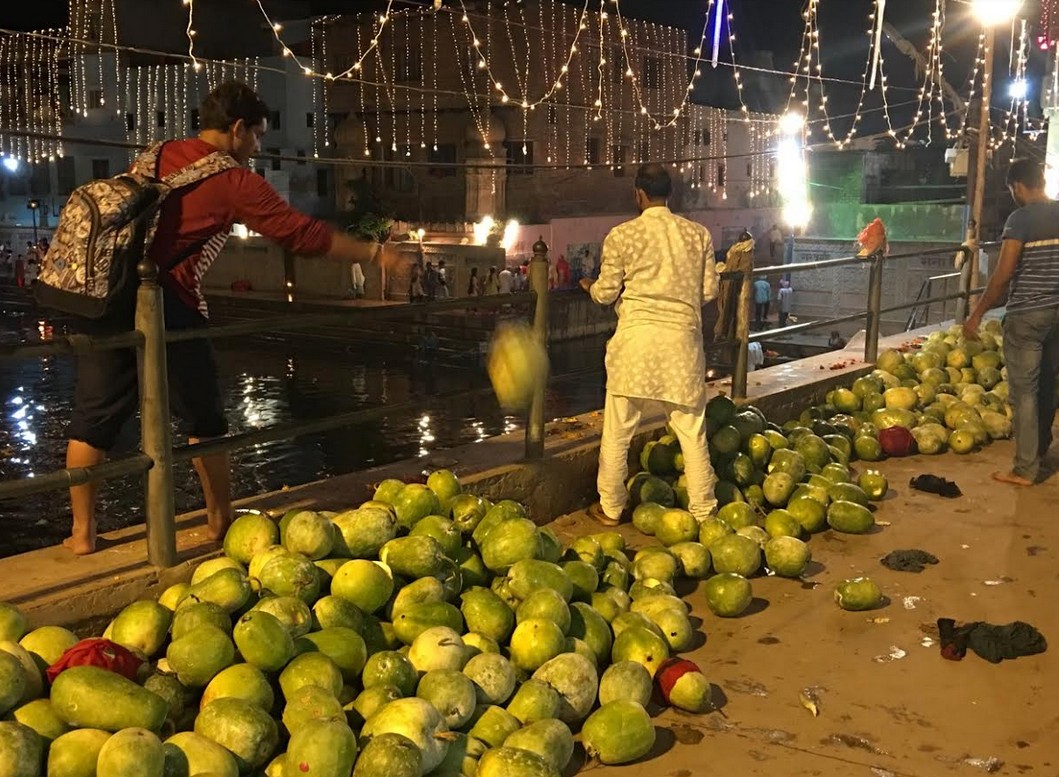
By Bhaktisiddhanta Swami
In the Padma Purana, Kartika Mahatmya, it is stated that Radha-kunda is very dear to Sri Hari and is situated near Giri Govardhan hill. By taking bath in Radha-kunda on the eight day of waning moon in the month of Kartika[Bahulastami] one can greatly please Lord Hari who enjoys His pastimes there. This Kunda is as dear to Sri Krsna as Radha Herself.
As a result of the killing of the Aristasura demon, a lila of mutual purification followed with the appearance of Syama-kunda from Krsna’s kick, and most importantly Radha-kunda from Radha/gopi’s dig, an invitation to all celestial rivers and then a bath; now this has become an annual midnight celebration.
All glories to this Bahulastami day, the appearance of Sri Radha-kunda!
After bathing in Radha-kunda, Krsna declared that henceforth, anyone who with firm faith took their bath on that day would achieve the same ecstatic love that Radharani had for Him. Radharani and Her girlfriends then took bath in Syama-kunda and Radhika declared that anyone who takes bath in Syama-kunda, will achieve the same ecstatic love that Krsna has for Her.
Soon all the Brajabasis from all over Braja came to bathe and from that day onwards, the Bahulastami celebration has taken place.
This pastime occurred at 12:00 p.m. on the eighth day of the waning moon in the auspicious month of kartika. Last night thousands, crowds packed the kunda, spreading out even to the surrounding brick pathways, delighted in the dipa dana and midnight bathing. Though rather cold the pilgrims, patiently waited their turn. A special puja was performed at the sangam, a full arotik with triple level dipa lamps from the steps by 5 pujaris amidst the resounding Radha nama.
As an offering on behalf of Srila Prabhupada, Iskcon Radha-kunda was allowed to sponsor the dipa dana with assistance from devotees from all around the world: Braja, India, USA, UK, and Ukraine; a unity in diversity. These devotees cleaned up both kundas of cloth, flower debri and kumara [Many with desires for suitable marital ties would offer these vegetables with rupees inserted within], well into the early morning.
This was a festival of glorification, to appreciate, honor and facilitate, but most importantly an effort to preserve, protect and care for the Dhama.


Comments